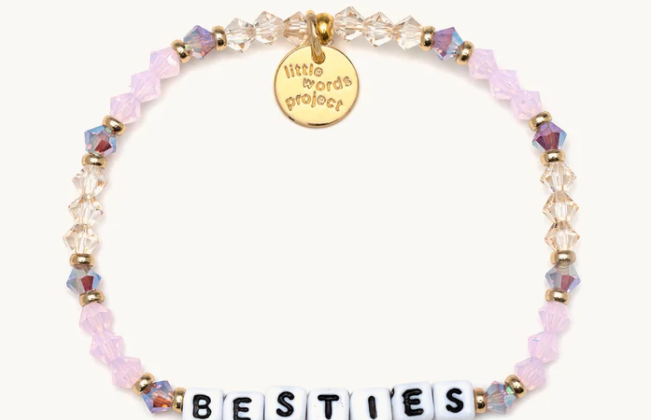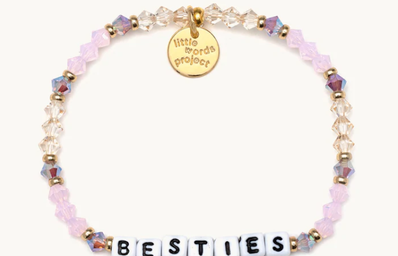Friendship bracelets have generally been associated with girls at summer camp. That’s where I learned to make the knotted bracelets and lanyards. I even learned to use a bead loom at one camp and a rainbow loom in my afterschool program. In each form of friendship bracelet, I learned from a girl older than me or a girl who had been doing it much longer. In this tradition, it became something more than a piece of somewhat tacky jewelry; the friendship bracelets were a way to connect with girls in my immediate community and to connect to girls I barely knew. Even if I didn’t really have friends to give them out to, the act of tying the knots side by side was enough to form a connection.
Like most things associated with girls, friendship bracelets are—or were—generally looked down upon. This is, of course, a much broader conversation than friendship bracelets about how anything associated with women is belittled, and this is a much needed conversation about when a ‘craft’ becomes ‘art.’ We know there is artistry in craft, yet there is such a chasm in cultural understanding of art and craft: crafts are for little kids and old women, and art is for serious, though often wacky, intellectuals. But I digress. That is a conversation for another time.
Friendship bracelets have, in recent years, entered the mainstream. This is largely due to Taylor Swift and her Eras Tour, based on a line in “You’re on Your Own, Kid,” a song about growing up. Like friendship bracelets and crafts in general, Taylor Swift is someone who has been constantly looked down upon by the general public, almost entirely because she makes music for girls and women. This is despite her being one of the most successful artists in history. We can clearly see the impact of her huge cultural influence through friendship bracelets. They went from being something that largely existed in summer camps, to bracelets thousands of people traded at her shows, to political messaging tools. It sends the very powerful message that women and girls have important cultural and political power.
The meaning in friendship bracelets, in some ways, is in the frivolity. Choosing to spend time creating something that has no ‘real value,’ however value is culturally defined, is what makes it valuable and meaningful. But we have also seen how friendship bracelets can be valuable in themselves. They have become tools embraced by the Kamala Harris Campaign, who now have Harris Walz bracelets in their online store and have held crafting events where participants can make their own bracelets. Other campaigns have embraced them in different ways as well. Just the other day, I was at a canvas launch for Hadley Haas, who is a Democrat running to flip an important State House seat in the suburbs of PIttsburgh, and whose campaign is heavily focused on public safety and reducing gun violence. As we were lining up for a group photo, we were comparing the bracelets we wore that day, mine saying “vote” and “not going back,” while hers said “vote” and “enough,” which had orange beads associated with groups working to end gun violence. She told me the orange bracelets were made by students in the district who then delivered them to representatives in the State Assembly, urging them to act and pass common sense gun laws to keep their schools safe. Just a few years ago, friendship bracelets were considered childish, and yes, frivolous, and now they’re being used in political spaces to send powerful messages. It is a testament to the value of women and women’s ‘crafts’ despite a world that constantly tries to minimize our power.
Of course, friendship bracelets won’t save the world, but just maybe they can help us on our journey. For me, they continue to be something mostly just fun and a way to send a message when my campaign t-shirts are in the wash. I now have friends to give them to, and people to teach my tricks to, such as you should really burn the ends of the elastic string for just a second before putting the beads on so the ends won’t fray (it makes it so much easier). But whether used by presidential campaigns or by my friends, the power of friendship bracelets is in building community. That community is built through teaching, learning, taking inspiration, and giving and receiving friendship bracelets, so that each bracelet is bigger than just one or two people. And just maybe, we can build a more connected world that values women, girls, and their crafts.

